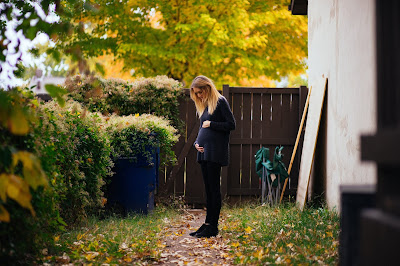What does a dietitian look like?
By Jorja Collins and Judi Porter
Do Google images of dietitians on the internet represent reality?
What images appear when you Google ‘dietitian’? In an era when most people have an internet-enabled device within reach at all times, a Google search is the go-to way to find the answer to a question, what we see on the internet shapes our perceptions and beliefs. We wanted to find out how dietitians are represented on the internet and how this compares to reality.
We conducted two Google image searches using the word ‘dietitian’. We took the first 250 images from each search, and used a coding framework to determine what the images were illustrating. The age, gender, ethnicity and work setting of the dietitian in the image, as well as the number, age and gender of other people presented were considered. We compared our findings to the demographic characteristics of real dietitians from Australia, the United Kingdom (UK) and the United States (US), sourced from membership data for Dietitians Australia (DA), the British Dietetic Association (BDA) and the Academy of Nutrition and Dietetics (AND).
The majority of images showed a young, white, female posing alone with food. Go ahead and do a Google search yourself and you’ll see what we mean.
In 78% of images, the work setting could not be determined because they were staged, profile-style shots. Food (usually fruit and vegetables) was the most common prop, but lab coats, stethoscopes, books and clipboards were common too. Less than a fifth of the images showed a dietitian with someone else. Where are the authentic images of real-life dietitians at work?
Dietitians work in a range of settings, with different types of people, doing different styles of tasks. These include working: with shop owners to change store layout in order to promote healthy food purchases; for food companies making sure product labels meet food laws; in hospitals devising a tube feeding protocol for an unconscious patient; in higher education, teaching and assessing students; in a lab researching food components and their effect on health; in a clinic providing dietary advice and education to people with health conditions. The list goes on and on. Wouldn’t it be great to see images of these actual dietitians in their ‘natural habitat’ instead of a staged, profile-style shot?
Where gender, age and ethnicity could be determined, the images showed: 90% female, 10% male; 3% <25 years, 77% 26-39 years, 18% 40-55 years and 2% >55 years; 89% Caucasian, 2% black, 8% Asian and 1% other ethnicities. Data of dietitians from Australia, UK and US reports the majority of dietitians are female and aged between 26-39 years, just like the images show, but in real life there are more dietitians aged 40+. Where are the images of older dietitians?
We didn’t classify body size and shape, but it’s safe to say the dietitian in most images was thin.
Overall, images of dietitians on the internet do not show a full and accurate picture of the work dietitians do or what dietitians look like. Recent analyses in nursing and speech pathology [1, 2] were similar, with the portrayal of these professions at odds with the reality of practice. Misconceptions among the public of the image of dietitians has a number of consequences. People may be less likely to seek advice from a dietitian and prospective students may be less likely to choose a career in nutrition if they think a dietitian looks like ‘that’.
Diversity in dietetics is really important to make sure that nutrition care and recommendations are inclusive and appropriate. We need to have a diverse range of dietitians in the profession AND represent them in images online. Read more here about how the Academy of Nutrition and Dietetics is tackling diversity in the US. The British Dietetic Association’s #WhatDietitiansDo social media campaign and photo competition demonstrates the role that professional associations can play in promoting awareness of the profession.
As a profession, we can change how dietitians are presented on the internet and show the true breadth and diversity of our work roles, age, gender, ethnicity and body shape. We can do this by embracing a less polished and more authentic ‘look’ when taking and sharing images that will end up on the internet. Live social media platforms such as Facebook live or Instagram and Snapchat ‘stories’, and videos and pictures in Twitter offer a dynamic snapshot of real life. We need more dietitians to take up media opportunities, and potentially positive discrimination or incentivisation in the short term to put the spotlight on dietitians who are the most underrepresented.
More Information
Jorja Collins is an Advanced Accredited Practicing Dietitian who works in foodservice at Eastern Health and as a lecturer and researcher in the Department of Nutrition, Dietetics and Food at Monash University. She was awarded a Churchill Fellowship to explore environmentally sustainable hospital foodservice. You can follow Jorja on Twitter via @Jorja_Collins.
Judi Porter is an Adjunct Associate Professor at Monash Nutrition and currently works at the Institute for Physical Activity and Nutrition (IPAN), School of Exercise and Nutrition Sciences, Deakin University.
Stay up to date with the Monash University Department of Nutrition, Dietetics and Food on Twitter via @MonashNutrition.
Photo by Jason Briscoe on Unsplash
Publication Information
Porter J. & Collins J. (2020) Do images of dietitians on the internet reflect the profession?. J Hum Nutr Diet. https://doi.org/10.1111/jhn.12793
References
1. Kalisch BJ, Begeny S & Neumann S (2007) The image of the nurse on the internet. Nurs Outlook 55, 182–188.
2. Byrne N (2017) Internet images of the speech pathology profession. Aust Health Rev 42, 420–8.


